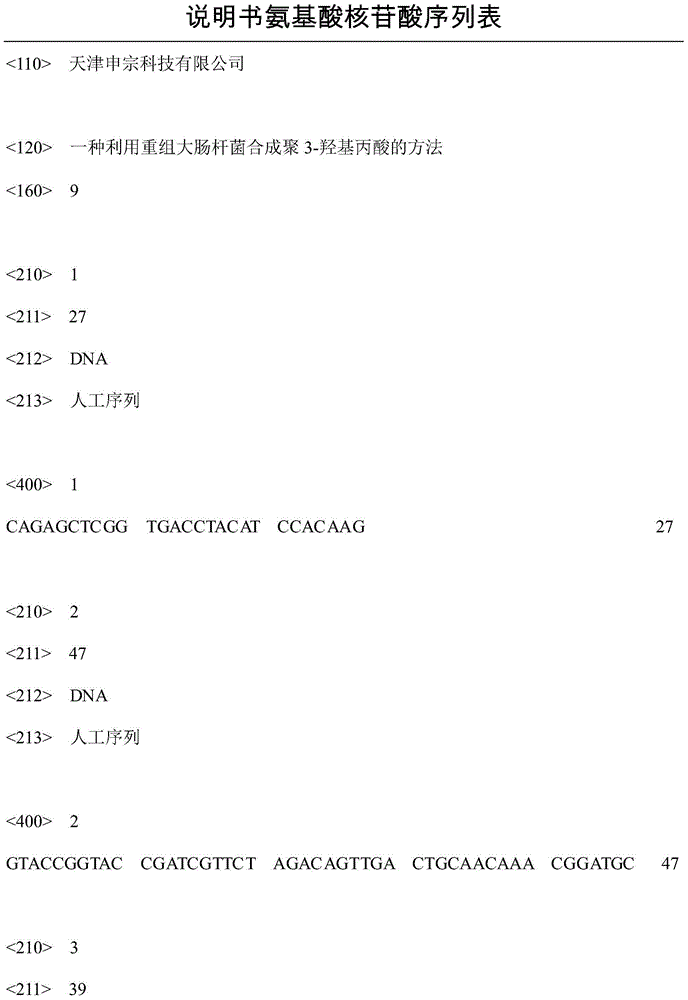Method of synthesizing poly 3-hydracrylic acid by utilizing recombinant Escherichia coli
A technology of recombining Escherichia coli and hydroxypropionic acid, which is applied in the field of genetic engineering, can solve the problems of NAD+ deficiency, affecting the synthesis of P3HP, etc., and achieve the effects of reducing loss rate, balancing reducing power, and maintaining stability
- Summary
- Abstract
- Description
- Claims
- Application Information
AI Technical Summary
Benefits of technology
Problems solved by technology
Method used
Image
Examples
Embodiment 1
[0027] A recombinant Escherichia coli strain, which integrates the synthetic gene of glycerol dehydratase and its activator, and the dhaT gene on the Escherichia coli genome, and the recombinant Escherichia coli strain has the ability to biosynthesize poly-3-hydroxypropionic acid and 1,3-propanediol ability.
[0028] The dhaT gene is obtained by cloning Klebsiella pneumoniae genome DNA with primers ZG-440 and ZG-441 as a template.
[0029] A construction method utilizing said recombinant escherichia coli strain, the steps are as follows:
[0030] Step 1: Construction of plasmid pET21 (A): using Klebsiella pneumoniae genomic DNA as a template, using primers ZG-440 and ZG-441 to clone the dhaT gene, the dhaT fragment and plasmid pWQ02 were digested with HindIII and XhoI and then ligated;
[0031] Step 2: Construction of plasmid pRE112(B): Using the genome of E.coliBL21 as a template, use primers ZG-268 and ZG-269, primers ZG-270 and ZG-271 to amplify the homologous fragments on...
PUM
 Login to View More
Login to View More Abstract
Description
Claims
Application Information
 Login to View More
Login to View More - R&D
- Intellectual Property
- Life Sciences
- Materials
- Tech Scout
- Unparalleled Data Quality
- Higher Quality Content
- 60% Fewer Hallucinations
Browse by: Latest US Patents, China's latest patents, Technical Efficacy Thesaurus, Application Domain, Technology Topic, Popular Technical Reports.
© 2025 PatSnap. All rights reserved.Legal|Privacy policy|Modern Slavery Act Transparency Statement|Sitemap|About US| Contact US: help@patsnap.com



